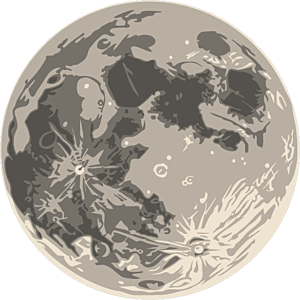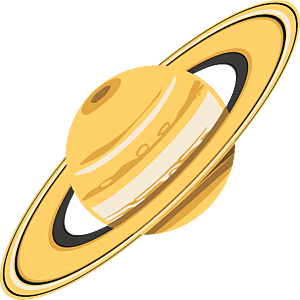The Downlink • Jun 07, 2024
Happy little accidents
Space Snapshot

Material from the far side of the Moon is on its way to Earth for the first time. Pictured here is China’s Chang'e-6 spacecraft shortly after its June 1 landing on the lunar farside. The lander collected samples of rock and regolith, loaded them into an ascent vehicle, and launched them into orbit for collection and return to Earth. Learn more about this mission and what it aims to teach us about the history of the Moon, Earth, and Solar System. Image credit: CNSA/CLEP.
Fact Worth Sharing

Although the Moon has been a familiar sight to humans throughout our species’ entire history, we didn’t get to see the lunar farside — which always points away from Earth — until October 1959, when it was photographed by the Soviet Luna 3 probe.
Mission Briefings


Voyager 1 has resumed returning science data. In an amazing recovery, the mission’s science team has succeeded in reviving two of the iconic spacecraft’s four science instruments for the first time since a computer issue arose with Voyager 1 in November 2023. The team expects to be able to recalibrate the remaining two instruments in the coming weeks, potentially restoring the spacecraft — which launched in 1977 — to normal operations. Pictured: Voyager 1’s twin spacecraft, Voyager 2, being assembled at NASA’s Jet Propulsion Laboratory in 1977. Image credit: NASA/JPL-Caltech.

Starship’s first commercial customer has pulled out. Japanese billionaire Yusaku Maezawa announced the cancellation of his “dearMoon” mission, which would have flown him and eight artists around the Moon on SpaceX’s Starship vehicle. Maezawa cited ongoing delays in Starship’s launch availability as the reason for having to cancel the mission.

Japan has lost contact with its Venus orbiter. JAXA announced last week that it has lost contact with the Akatsuki spacecraft, which has been in orbit around Venus since 2015, studying the Venusian atmosphere. JAXA is currently making efforts to reestablish communication with the spacecraft.

Starliner and Starship both launched successfully. On Thursday, Boeing's new Starliner capsule safely docked with the International Space Station to deliver its two-member crew. That same day, SpaceX's Starship rocket launched and then successfully landed the Super Heavy rocket main stage in the Gulf of Mexico and the Starship vehicle in the Indian Ocean.
From The Planetary Society


Sometimes science happens by accident. The Hubble Deep Field (pictured) is a great example of this. In 1995, astronomers pointed the Hubble Space Telescope at what looked like an empty patch of sky, but, to their surprise found hundreds of galaxies — a discovery that was neither expected nor intended for Hubble’s mission. In his book “Accidental Astronomy: How Random Discoveries Shape the Science of Space,” Chris Lintott explores how happenstance like this shapes how we study space. He joins this week’s Planetary Radio to discuss the delightfully unpredictable nature of space discoveries. Image credit: R. Williams (STScI), the Hubble Deep Field Team and NASA.

The Planetary Society welcomes Newton Campbell Jr. to the board of directors. Dr. Newton Campbell Jr. is an internationally recognized leader specializing in the use of artificial intelligence (AI) in space exploration and is the Director of Space Programs at the Australian Remote Operations for Space and Earth (AROSE) Consortium. Dr. Campbell has been an active member of The Planetary Society since 2014 and joined the board of directors this year.

Going beyond the horizon. Thanks to supporters like you, we’re over 85% of the way to our overall goal of raising vital funds to expand our core mission and strengthen the Society as part of the final phase of our five-year plan. Plus, we've reached our campaign participation goal and activated an additional $10,000 in funds thanks to your help! And there's still time to join us... you can make a gift of any amount today to support our future as the world's leading citizen space advocacy organization.
New in the member community

June’s book club pick is here. This month, The Planetary Society’s members-only book club will be reading “The Asteroid Hunter: A Scientist’s Journey to the Dawn of our Solar System" by Dante Lauretta. This book follows Dr. Lauretta’s journey as the leader of the OSIRIS-REx mission to return an asteroid sample and unlock the mystery of the formation of life on Earth. Lauretta will join the June book club’s virtual meeting to answer members’ questions and chat about the book. Not yet a member? Join today.
What's Up

Yellowish Saturn is high in the pre-dawn east, with reddish Mars below it and Jupiter even lower, closer to the horizon. On June 11, the Moon will be near Regulus, the brightest star in the constellation Leo, in the evening western skies. Learn more about June’s night skies.
Wow of the Week

Old meets new with this wooden satellite, built by researchers at Kyoto University in collaboration with logging company Sumitomo Forestry. The tiny satellite, named LignoSat, is made from magnolia wood and will be launched to the International Space Station in September. From there, LignoSat will be released to test its strength and durability. The benefit of wooden construction is that the material will burn up completely when the device re-enters the atmosphere, potentially providing a way to avoid generating metal particles when a retired satellite returns to Earth. Image credit: STR / JIJI PRESS / AFP.
Send us your artwork!
We love to feature space artwork in the Downlink. If you create any kind of space-related art, we invite you to send it to us by replying to any Downlink email or writing to [email protected]. Please let us know in your email if you’re a Planetary Society member!


 Explore Worlds
Explore Worlds Find Life
Find Life Defend Earth
Defend Earth

